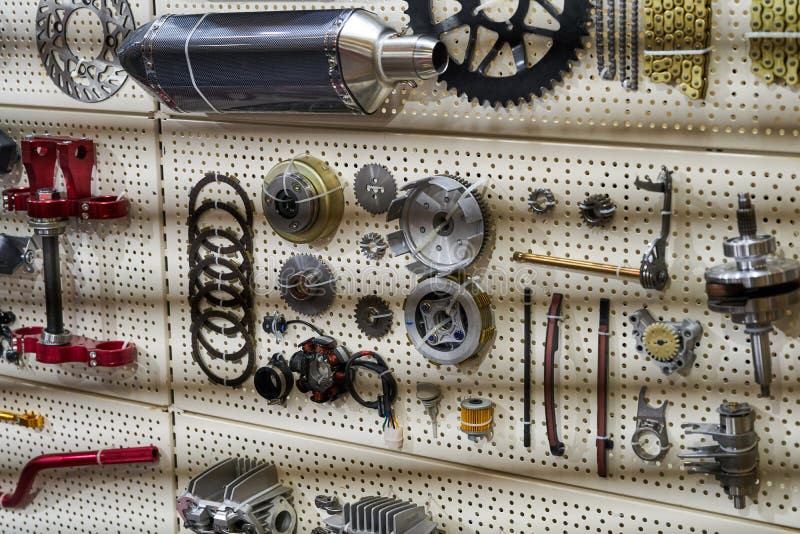Grasping Motorcycle Gears: How to Optimize Your Riding Experience
In the realm of motorcycling, understanding the art of equipment control is vital for boosting your riding efficiency. Effectively recognizing and using bike equipments can substantially influence gas, control, and velocity effectiveness, transforming an ordinary experience into a smooth, thrilling journey. By incorporating exact shift timing and adjusting gear selection to numerous road conditions, bikers can make sure ideal engine performance and safety and security. The subtleties of clutch control, throttle coordination, and equipment mechanics beckon a much deeper exploration, promising to unlock the full possibility of your equipment. Exactly how can these methods be used to really maximize your riding experience?
Recognizing Gear Mechanics
At the core of motorbike dynamics, gear technicians play a crucial duty in converting engine power into activity, eventually dictating rate and control. The equipment ratios, carefully made, establish the partnership in between engine transformations and wheel turns, affecting acceleration and gas effectiveness.
Recognizing gear technicians starts with acknowledging the importance of the gearbox, which houses numerous gears of differing sizes. These gears communicate through a procedure called meshing, where teeth of different gears involve to transfer power. The accuracy of this interaction is important; any imbalance or damage can cause inefficient power transfer, preventing efficiency. Additionally, the setup and size of equipments affect the motorbike's ability to manage various lots and speeds.
Additionally, the principle of gear moving is essential to taking full advantage of efficiency. Smooth and timely changes make certain that the engine operates within its optimum power band, avoiding unneeded pressure and boosting longevity (motorcycle shop). By comprehending these mechanical ins and outs, riders can achieve a harmonious mix of control, power, and efficiency, elevating their riding experience
Timing Your Shifts
Shift timing mastery is important for maximizing motorcycle efficiency and enhancing the riding experience. Correctly timed shifts guarantee that the engine operates within its ideal power band, which is critical for maintaining control, accomplishing smooth velocity, and making certain the longevity of the motorbike. Motorcyclists need to create an intuitive feeling of when to change gears, which involves recognizing the relationship in between engine revolutions per min (RPM) and rate.
To understand shift timing, pay attention to the engine's audio and feel, as these provide important clues about when to change gears. The optimal change point usually happens when the engine comes close to the upper array of its power band without getting to the redline. Changing as well early can lead to an absence of power, while changing too late might cause unneeded engine strain
Additionally, road problems and riding style influence shift timing. In contrast, throughout highway riding, fewer changes at higher speeds can be extra suitable.
Enhancing Gas Performance
While mastering motorbike equipments is essential for efficiency, enhancing fuel performance is just as essential for both ecological and economic reasons. Ideal fuel intake not only lowers operational costs however likewise decreases the ecological footprint of riding. To attain this, one should comprehend the complex partnership in between equipment selection and engine performance.
Firstly, selecting the best equipment at proper speeds can considerably affect fuel usage. Riding check my blog in a greater equipment at reduced speeds can cause engine lugging, which is harmful to both gas economic climate and engine health. Conversely, riding in lower gears at high speeds results in unnecessary gas intake. Hence, keeping an optimum equilibrium by changing equipments abreast with roadway conditions and expected maneuvers is vital.
Furthermore, routine maintenance plays a pivotal duty in gas efficiency. Guaranteeing that the bike is well-tuned, with tidy air filters and effectively pumped up tires, can enhance aerodynamics and lower gas wastage. Furthermore, taking on a riding style that embraces steady acceleration and smooth slowdown can add to better gas economy.

Strategies for Smooth Transitions
Accomplishing smooth equipment shifts is basic to improving the riding experience and ensuring the durability of a motorcycle's transmission system. Correct gear changing not only contributes to a smooth trip however also lessens wear and tear on the mechanical elements. To grasp the art of smooth shifts, cyclists should concentrate on a few crucial strategies.

Second of all, clutch control plays a crucial duty. Engaging and disengaging the clutch smoothly requires method. The clutch lever need to be launched progressively, permitting a seamless transfer of power from the engine to the most comfortable motorcycle helmet wheels without causing a jolt or abrupt motion.

Adjusting to Roadway Problems
Browsing varied roadway conditions is a vital skill for any motorcyclist intending to keep control and safety and security. Whether you're riding on damp surfaces, gravel roadways, or browsing sharp turns, your ability to adjust your equipment usage and riding technique is paramount. Recognizing just how to change your gears appropriately can dramatically affect traction and security, making certain a much safer journey.
On damp roads, it is recommended to preserve higher gears to decrease torque and decrease wheel spin. This method aids maintain grip on slippery surfaces, enabling for smoother velocity and slowdown. In comparison, when riding on gravel or irregular terrain, reduced gears are preferable. Reduced gears give much better control and allow you to react more quickly to unforeseen modifications in the roadway surface.
Sharp curves require precise gear monitoring to stabilize speed and control. Downshifting before getting in a curve can assist keep momentum while making sure the bike stays secure throughout the turn. Consistent method in diverse problems improves your capacity to react and forecast to changes in road appearance and slope.
Conclusion
Grasping bike equipments substantially boosts the riding experience by boosting gas, velocity, and control performance. A complete understanding of equipment auto mechanics and exact change timing ensures the engine operates within its optimal power band, while smooth shifts with efficient clutch and throttle sychronisation rise convenience and efficiency. Adjusting equipment selection to different roadway problems, such as using greater gears on wet surfaces and lower gears on other gravel, further enhances handling and safety. Ultimately, these skills boost the overall journey.
Understanding equipment auto mechanics begins with recognizing the value of the transmission, which houses several gears of differing sizes. These equipments engage with a process recognized as meshing, where teeth of different equipments involve to transmit power (motocross parts nz). Gentle adjustments to the throttle throughout gear changes can stop jerky movements and keep a constant riding pace
Whether you're riding on damp surfaces, gravel roads, or browsing sharp turns, your capability to adapt your gear usage and riding method is vital. Adapting equipment choice to various road conditions, such as utilizing greater gears on damp surface areas and reduced gears on gravel, further improves handling and safety.